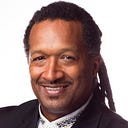Pride Month Looked Different This Year: How BLM and Pride are Intertwined
“I am not free while any woman is unfree, even when her shackles are very different from my own. And I am not free as long as one person of colour remains chained. Nor is any one of you.” — Audre Lorde, “Uses of Anger: Women Responding to Racism”
On June 28, 1969, a riot was taking place in New York City, and it looked a lot like the ones we’ve seen in Minneapolis (and all around the world) over the last few weeks. Two trans women of color led that riot, now known as the beginning of the Pride movement and the movement for LGBTQ+ liberation. Many of the early uprisings for gay liberation were responses to police raids of “gay bars” or gathering places popular among LGBTQ individuals — where police carried out violent raids, similar to today’s police brutality against Black people — and the people fought back.
Due to the coronavirus, a lot of Pride events this year were canceled or moved online, causing disappointment for a lot of hopeful Pride attendees. But these events also looked different for another reason: the time of heightened awareness of, and in some cases of real & revolutionary action for, racial justice. Many Pride organizers stepped aside in favor of LGBTQ+ BLM leaders, and many events changed the tone and purpose of their gatherings in order to not distract from but lift up the current racial justice movement.
Here are some inspiring ways the Black Lives Matter movement and Pride have been working together:
- Pride and Black Lives Matter supporters are rallying together for change
- GLAAD statement: “There can be no Pride if it is not intersectional”
- Dallas Pride marchers kneel for 8 minutes and 46 seconds to honor George Floyd
- Protesters call for “All Black Lives” to matter, commemorating the losses of queer Black folks whose deaths are too-rarely spoken of
- How the Black Lives Matter Protests Complement Pride Month
This month, the Supreme Court has also made landmark rulings for LGBTQ rights — in the midst of the current administration’s decision to remove protections against discrimination for transgender patients from healthcare laws, the Supreme Court ruled that Civil Rights laws protect LGBTQ workers.
This intersectionality might seem unexpected or surprising on its face — but when we look back at the history, it’s not surprising at all. The Gay Liberation movement rose up in response to police brutality against peacefully celebrating LGBTQ+ folks. The Black Lives Matter movement is an uprising in response to police brutality against peaceful Black folks. Though their histories, legal protections, and current situations are different, we remember Audre Lorde’s words and remind ourselves of the continual & perpetual need to work for collective liberation. For, at the core, all forms of oppression are related. Let’s continue to see the connections and similarities, elevate and amplify the voices of the most marginalized, and work for justice for all people.
